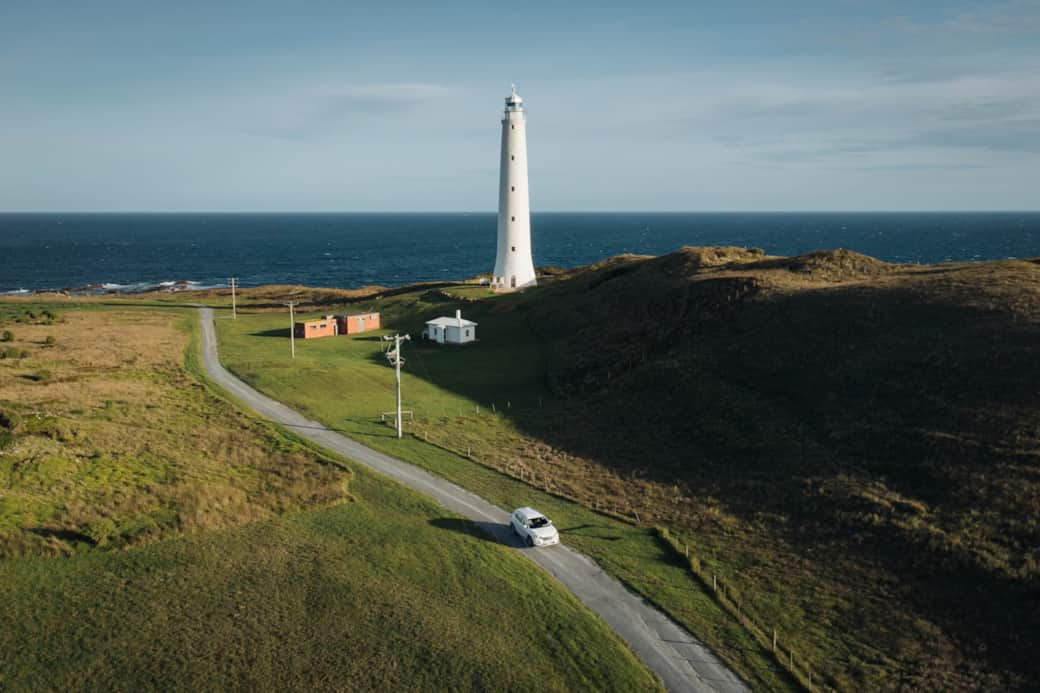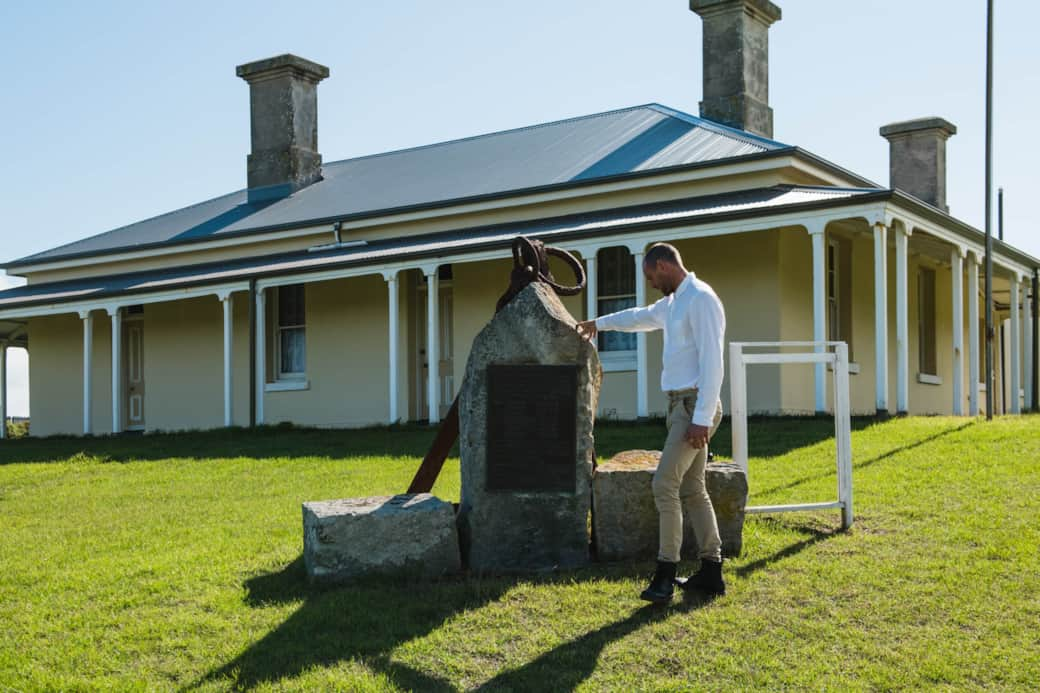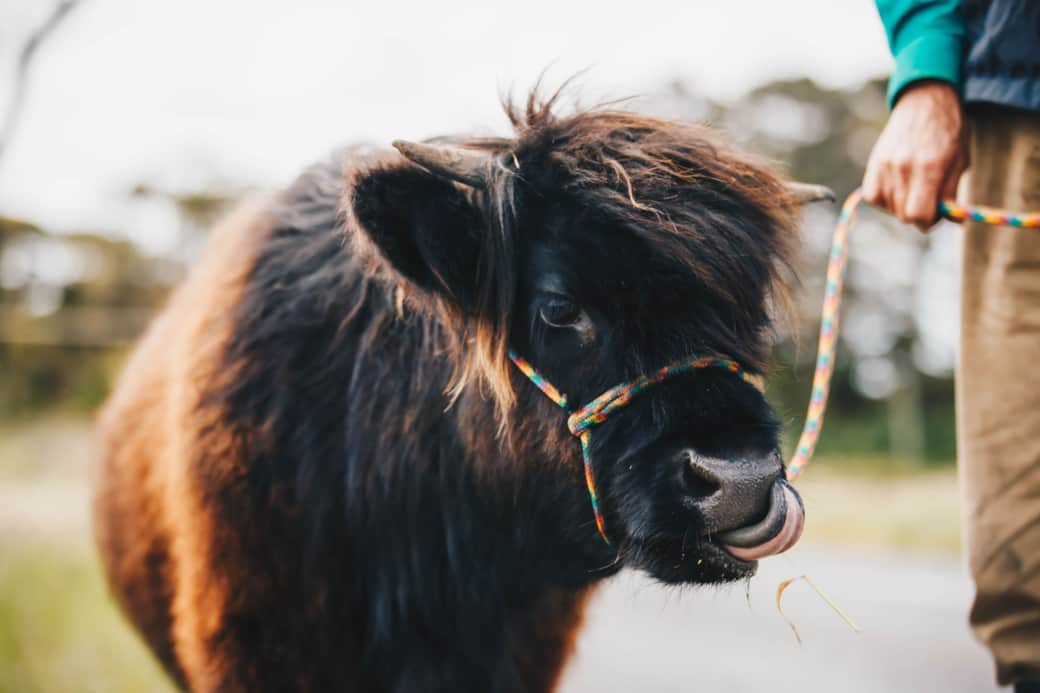
King Island sits in the middle of the Bass Strait, between Tasmania and mainland Australia - a windswept place that feels like it’s at the edge of the world. Stretching 64 km long and 24 km wide, it’s home to around 1,600 people (and a few hundred thousand wallabies), yet it feels vast and open. The island is only accessible by plane, with regular commercial flights from Melbourne and Tasmania (around 45 minutes).
King Island has a layered history. Once part of a land bridge between Tasmania and the mainland, it was later cut off by rising seas and remained uninhabited for thousands of years. Aboriginal Tasmanians visited seasonally for hunting and gathering, but no permanent communities were established. European settlement followed in the 1800s, with farming, dairying, and fishing shaping island life. The sea has always been central to the island's story - over 140 shipwrecks scatter the coastline, reminders of the treacherous waters that brought both tragedy and resilience to our remote community.
Today, King Island’s economy is built on its natural strengths. The lush pastures produce world-renowned beef and dairy, while the surrounding waters support thriving crayfishing and abalone industries. Kelp harvesting remains a unique part of island life, with bull kelp gathered from the beaches and exported worldwide. Increasingly, tourism has become a vital part of the island’s identity, particularly with the opening of Cape Wickham and Ocean Dunes in 2015 and 2016 respectively - courses that placed King Island firmly on the global golfing map.
Yet King Island is more than what it produces; its true richness lies in the experience of being here. It’s a place to breathe - where people come to escape the noise of the world and immerse themselves in nature at its most beautiful. Home to a community known for resilience, hospitality, and connection to the land and sea, it draws visitors for world-class golf, uncrowded surf, and exceptional produce - from cheese and crayfish to premium beef. But it’s the island’s wild coastline and rare sense of space that linger longest, leaving you with the feeling you’ve touched somewhere truly unforgettable.
For more information check out: King Island Tourism

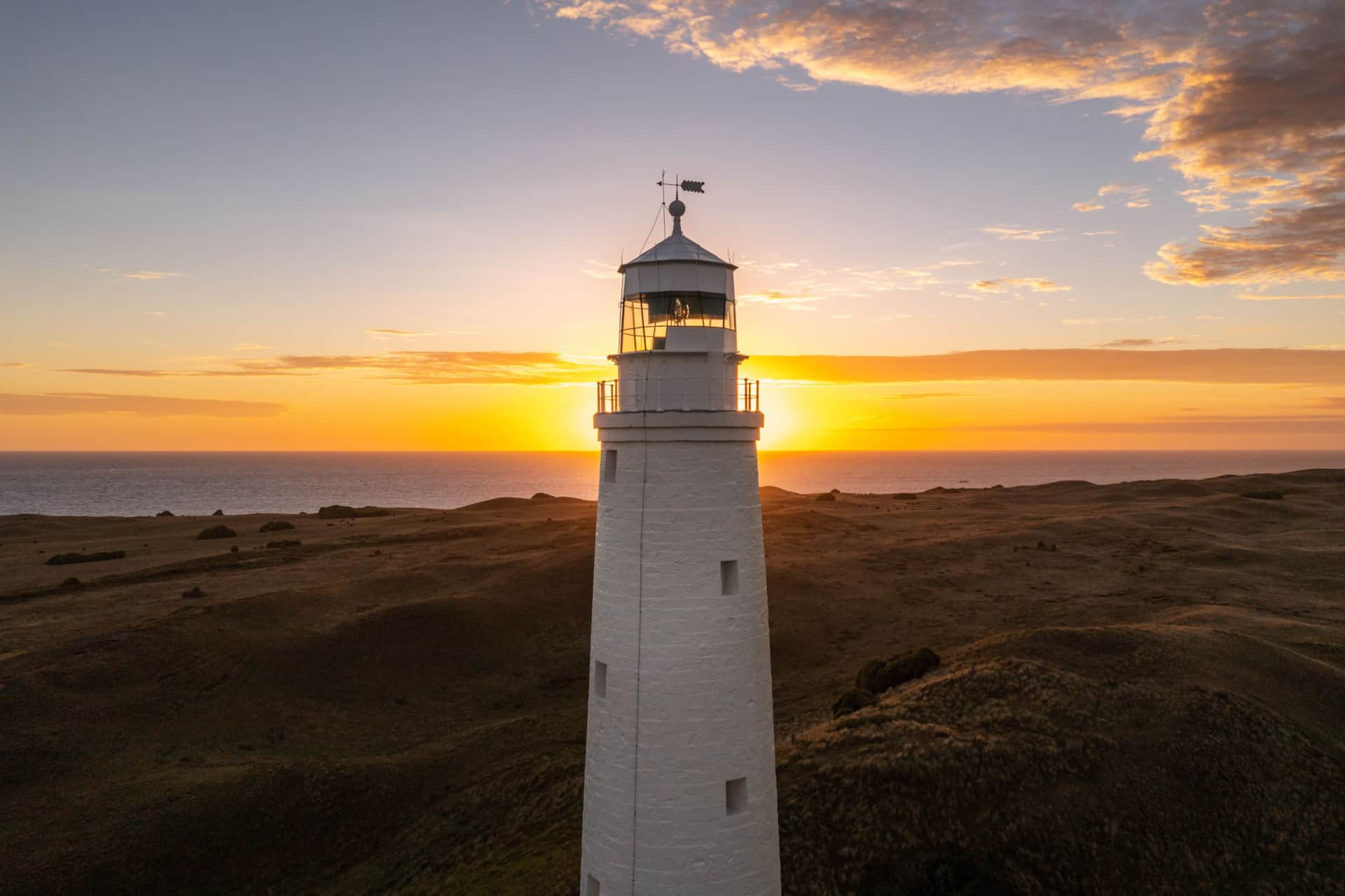
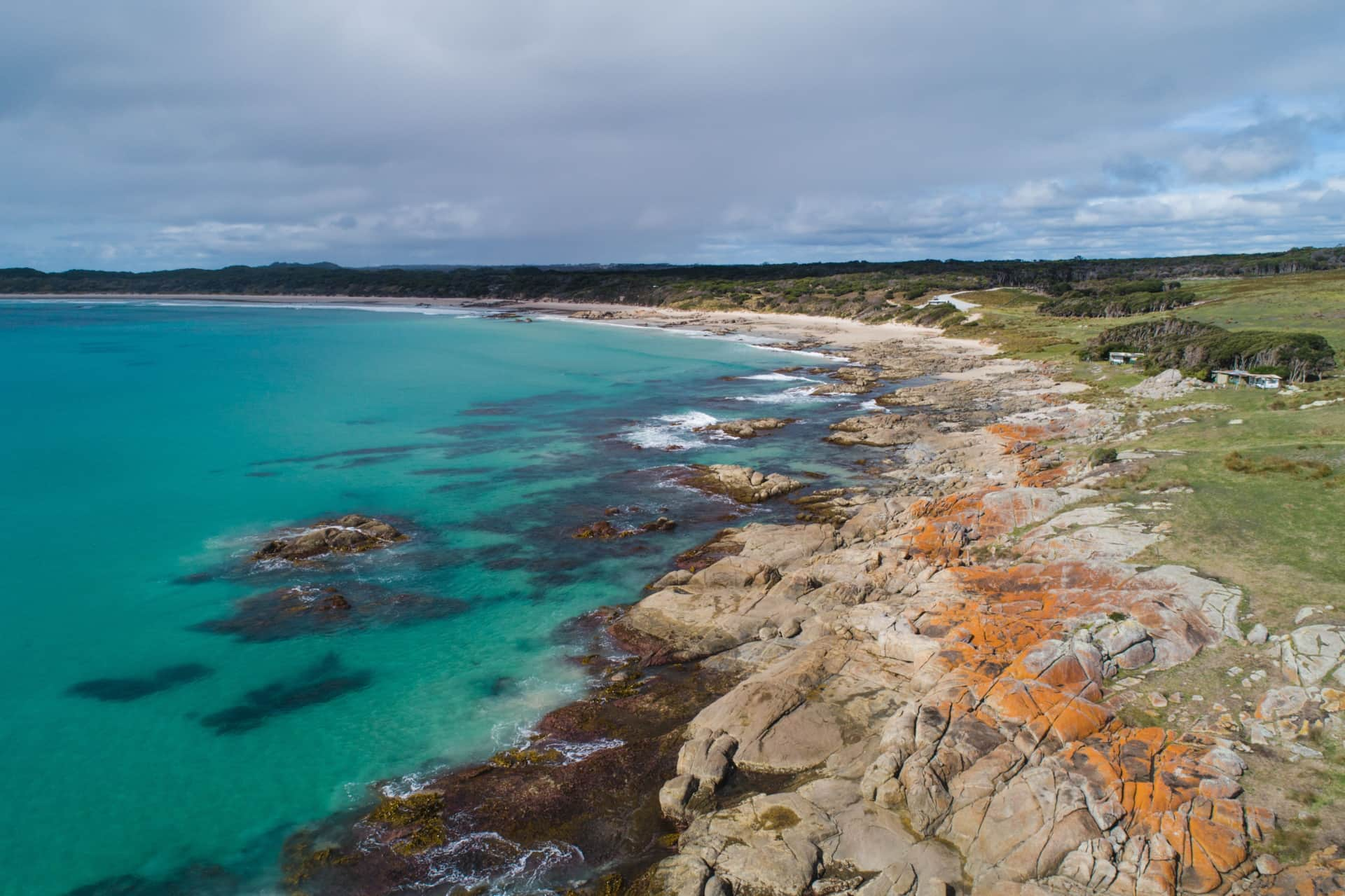


King Island is home to three spectacular golf courses that together rank among the finest in the world. Here, fairways cling to clifftops, greens roll into natural dunes, and every shot is framed by the Southern Ocean. There are no city skylines or manicured crowds, just raw landscapes and courses shaped by nature itself.
The story began in 1932 with the King Island Golf & Bowling Club, built by locals and shaped by wind, sand, and community spirit. Almost 80 years later, the arrival of Cape Wickham and Ocean Dunes put King Island firmly on the global stage. Today, golfers travel from across the globe not just for the challenge, but for the sheer spectacle of playing at the edge of the world.
Red Rock Hut is perfectly positioned between them all - 25 minutes north to Cape Wickham, 20 minutes south to Ocean Dunes, and 25 minutes south to “the local” in Currie.
Cape Wickham Golf Links
Set on the island’s remote northern tip beneath Australia’s tallest lighthouse, Cape Wickham delivers a breathtaking golfing experience. Fairways wind through towering dunes and dramatic clifftops, with Bass Strait ever-present as both backdrop and hazard. Every hole has a view of the ocean, culminating in an unforgettable closing stretch along the shoreline. Ranked #1 in Australia by Golf Australia and #58 in the world in 2024, it’s a true bucket-list course.
Ocean Dunes Golf Course
Stretching along the island’s wild west coast, Ocean Dunes is sculpted by wind, water, and raw coastal terrain. Almost every hole offers sweeping ocean views, with the Roaring Forties blowing across undulating fairways and greens perched above crashing surf. Bold, beautiful, and dramatic, it captures the essence of links golf at its most exhilarating. Ranked #13 in Australia by Golf Australia, it’s a must-play alongside Cape Wickham.
King Island Golf & Bowling Club
Yet it’s “the local” - King Island Golf & Bowling Club - that captures the island’s soul, where farmers and visitors share the fairways, and the clubhouse beer tastes as good as the ocean views. The course features 17 alternate tees and 12 greens across 10 fairways, offering surprising variety in every round. Ranked among the world’s best 9-hole courses by GOLF Magazine, it remains the most authentic King Island golfing experience.
What unites them all is a sense of discovery - of golf that feels wild, authentic, and truly once-in-a-lifetime.
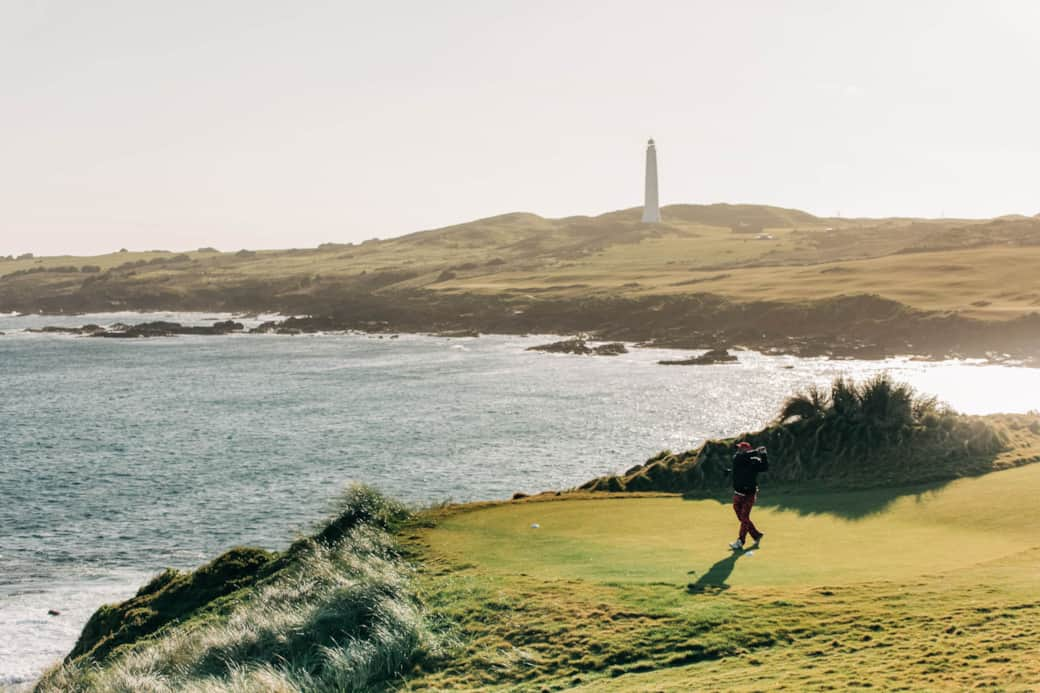
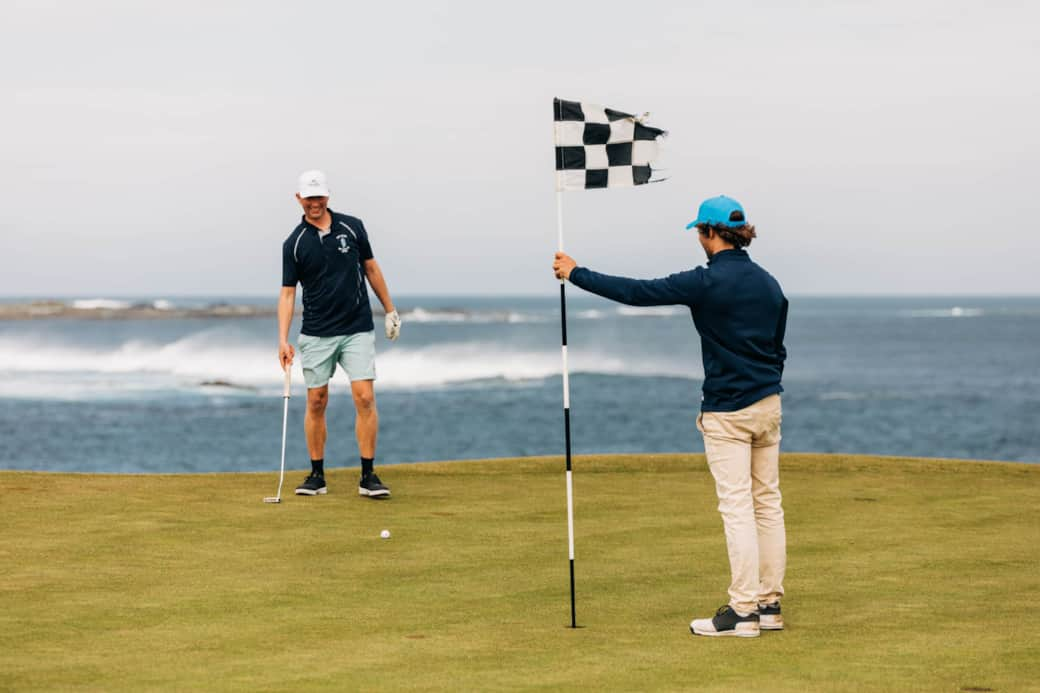
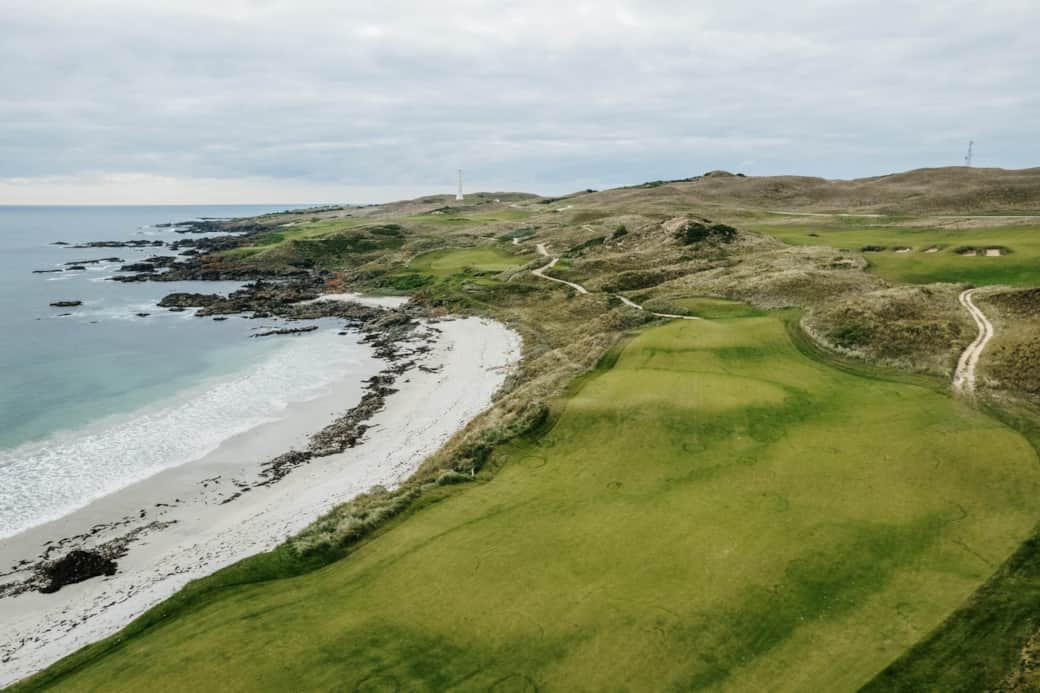

Wild, remote, and untouched - King Island is a place where surfing still feels pure. There are no crowds, no busy car parks, just endless coastline, raw reef breaks, and the sound of the Roaring Forties. It’s this rugged beauty that has quietly given the island cult status among surfers, drawing legends like Mick Fanning and Kelly Slater, along with adventurous travellers chasing something rare.
With swell exposure from all directions, there’s almost always a wave to be found. Summer brings warmer water and playful breaks along the west coast, while winter delivers powerful east-coast surf, including the island’s crown jewel: Martha Lavinia - voted one of the world’s top 10 waves by Surfing Life Magazine.
But it’s not just about world-class barrels. From the gentle peelers at Disappointment Bay, to the friendly lines at Phoques Bay, or the convenience of Porky’s Beach just minutes from Currie, there’s something here for every level. What unites them all is the feeling of discovery - of surfing wild, uncrowded waves at the edge of the world.
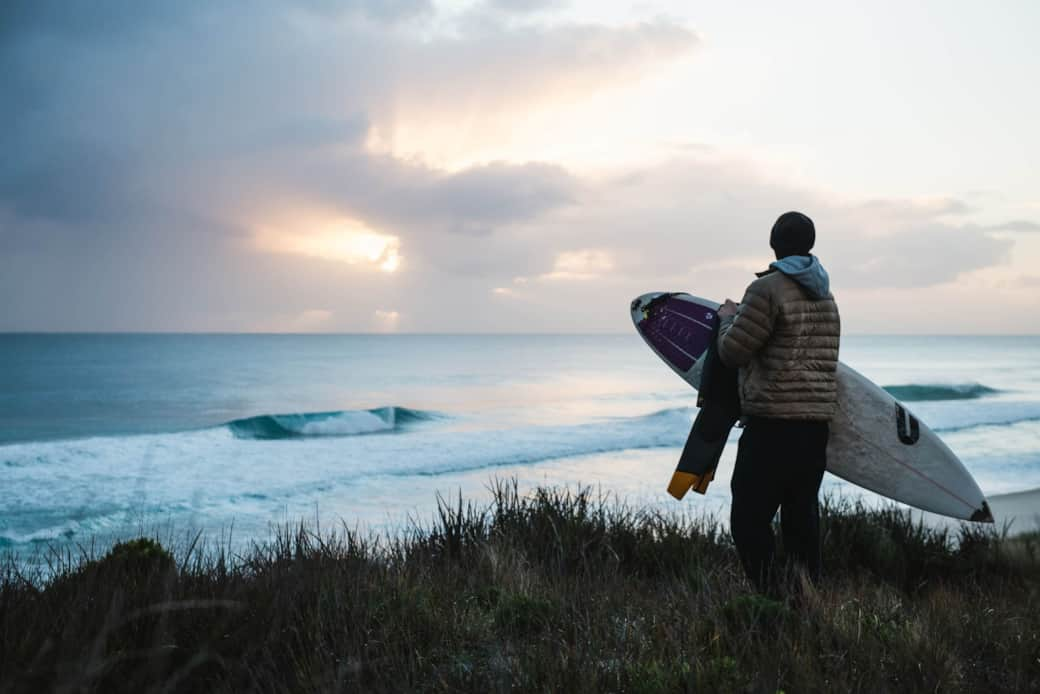
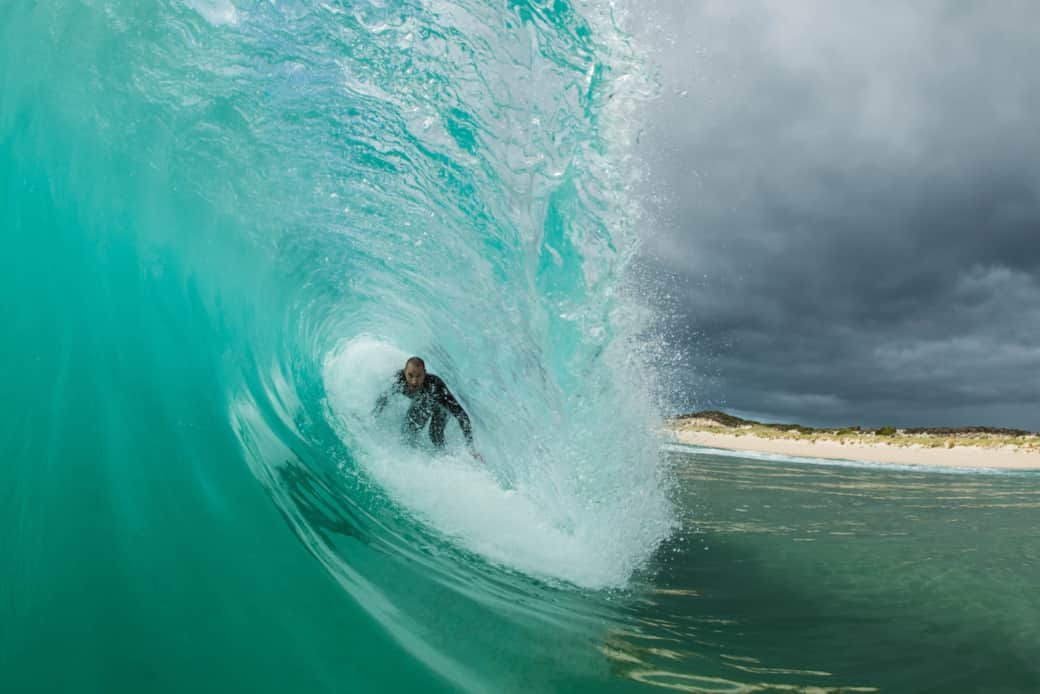
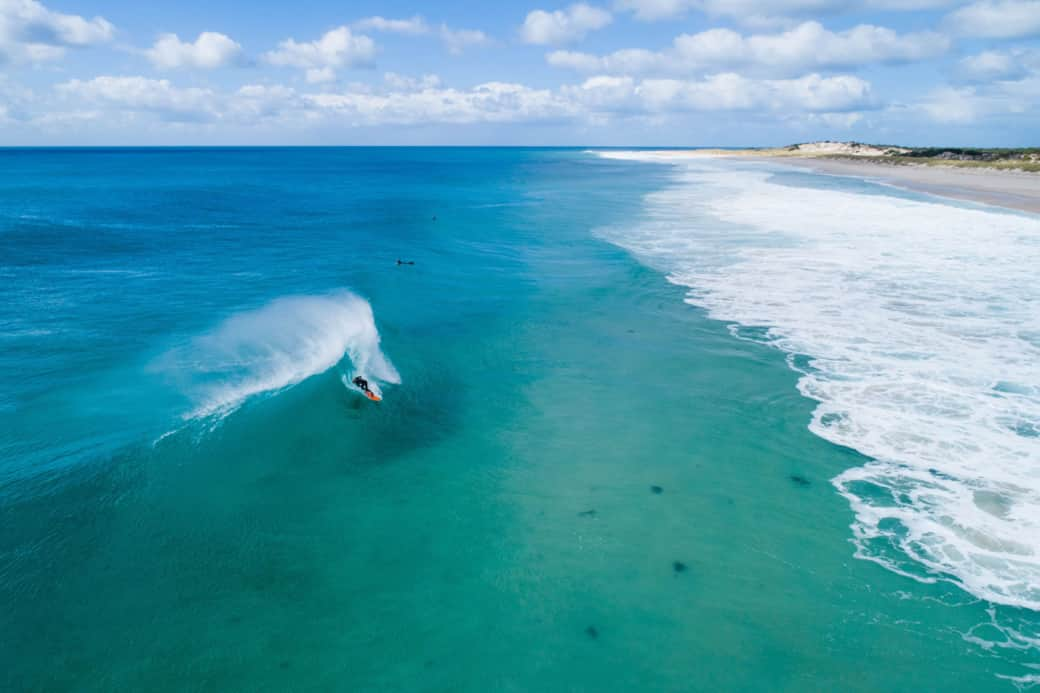

Remote and fertile, King Island has built a reputation for food that’s as pure as its landscapes. Salt-sprayed pastures produce some of the world’s most sought-after beef, while the island’s waters yield Southern Rock Lobster so prized it’s shipped to restaurants across the globe. Add to that the iconic King Island Dairy, whose award-winning cheeses have shaped the island’s identity for more than a century, and you begin to see why food lovers travel here.
But the story doesn’t end there. From abalone and fresh-caught fish, to local lamb, honey, small-batch gin, and locally brewed beer, the island’s produce is shaped by wild seas and clean air. Dining here is never just about eating - it’s about tasting a place where nature sets the table.
At Red Rock Hut, you can experience King Island’s food your way. With access to the island’s fresh produce - from the supermarkets, butcher, and bakery - you can prepare meals in the well-equipped kitchen or on the BBQ, enjoying flavours born of the land and sea.
Prefer something effortless? We can arrange chef-designed Heat & Eat hampers and breakfast hampers, showcasing the best of King Island’s seasonal produce without leaving the Hut.
Or, head out to explore the island’s restaurants and cafés, each highlighting local ingredients in their own style - from cosy bistros and wine bars to pizzerias and hearty pub meals.
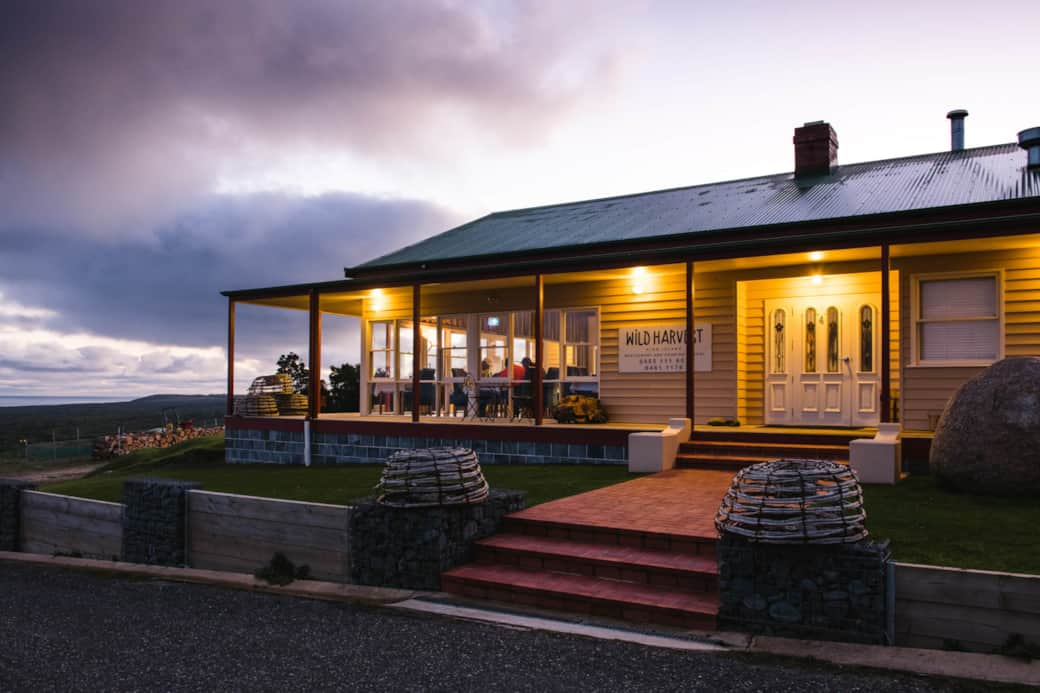
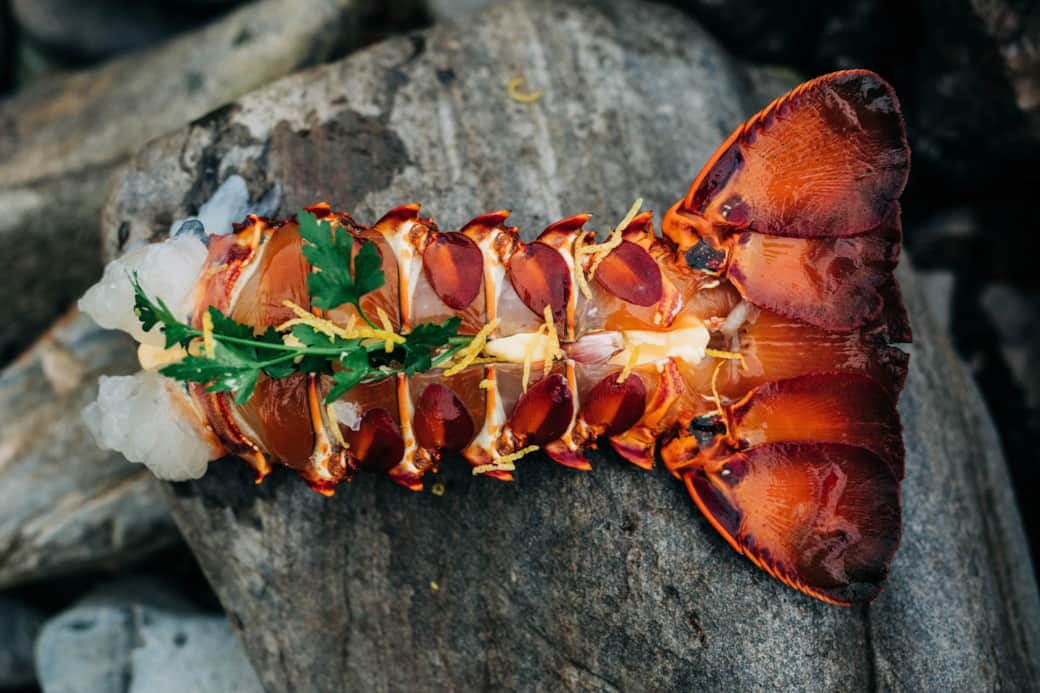
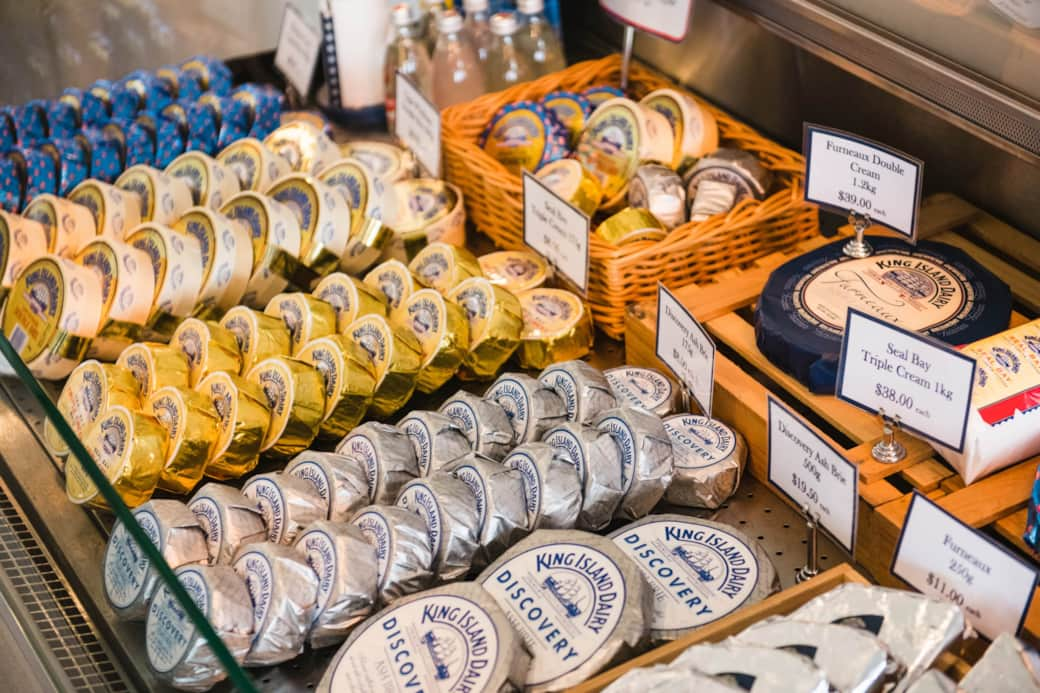

With its wild coastline, rolling dunes, and windswept headlands, King Island is best discovered on foot. Walking here isn’t about crowded trails or ticking off distances - it’s about slowing down and connecting with the island, where ocean, sky, and land meet in endless horizons.
You’ll find everything from short strolls to hidden beaches, to longer coastal walks that trace rugged cliffs and pass old shipwreck sites. Popular options include the Copperhead Walk in Currie, where the lighthouse keeps watch over the harbour; the Seal Rocks Walk, which meanders through wetlands alive with birdlife; and the dramatic Calcified Forest, where ancient roots have been preserved in limestone.
Many guests also enjoy simply walking the beaches near Red Rock Hut, where you can go for kilometres with only wallabies and seabirds for company. From the Hut, you can follow the old kelp tracks north (anytime) or south (in low-tide). These paths were once used by locals to transport harvested bull kelp, a trade that shaped much of King Island’s history and identity.
Just up the road, the Yellow Rock Beach walk, where at low tide you can see the last visible shipwreck on the island - the Shannon. Or take a wander at Porky’s Beach, and stop in at the King Island Dairy afterwards for a cheese tasting.
If you’re looking to explore with a local, we highly recommend King Island Walks for guided experiences that bring the island’s landscapes and stories to life.
Whether you’re after an easy amble or a day of adventure, walking on King Island is about more than exercise - it’s about immersing yourself in landscapes that feel truly untamed.
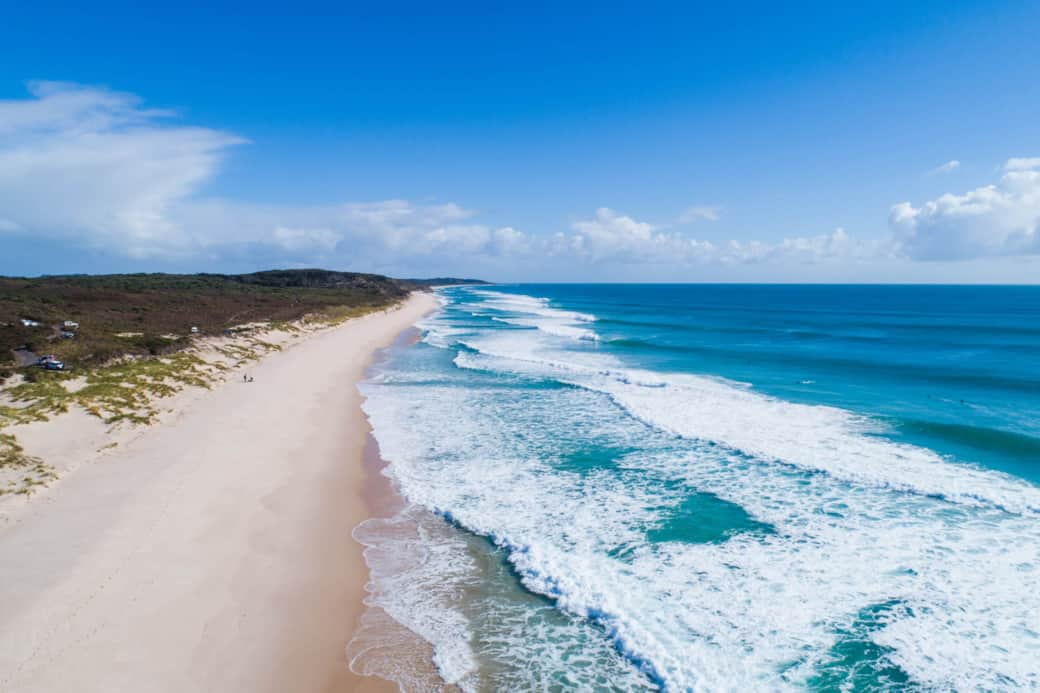
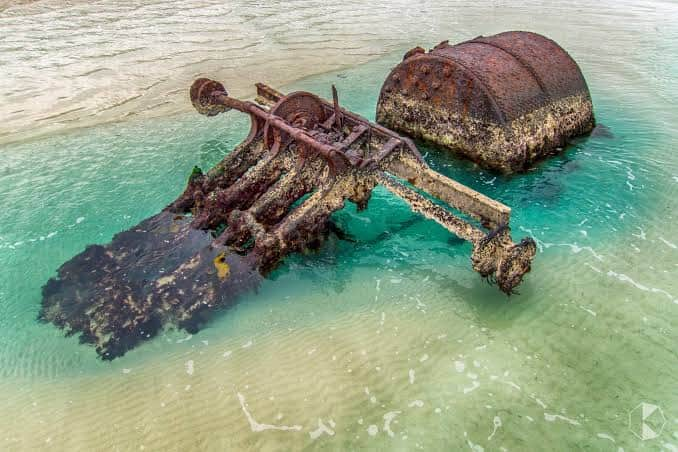
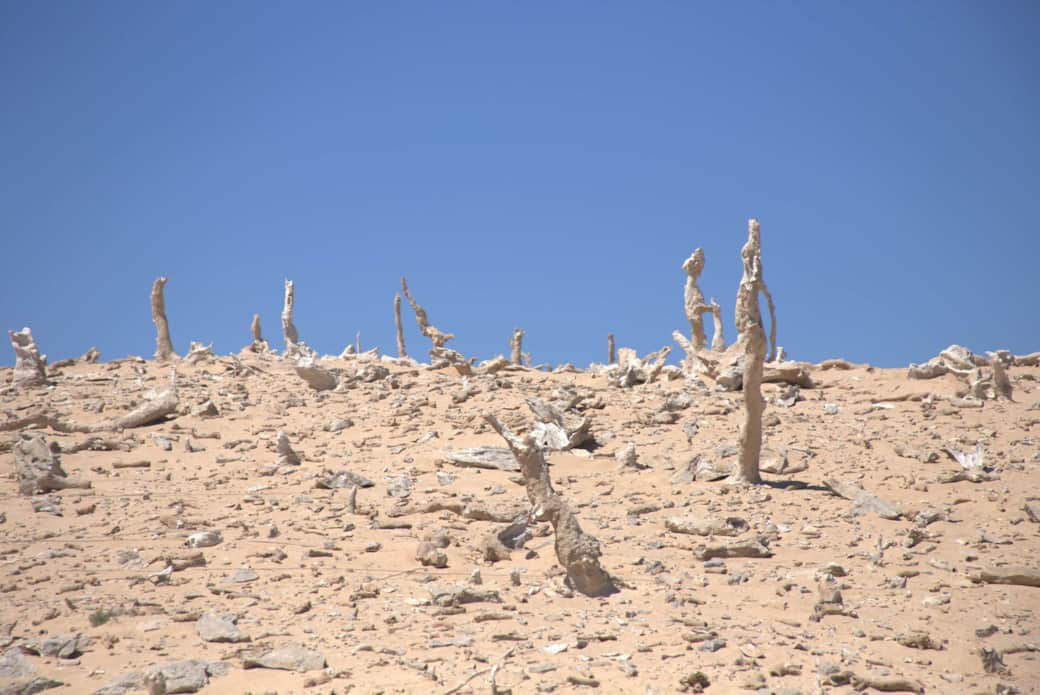

King Island has a rich and layered past. Thousands of years ago it formed part of a land bridge linking Tasmania to the mainland, before rising seas created the Bass Strait. While uninhabited at the time of European discovery in the late 1700s, Aboriginal Tasmanians visited seasonally for hunting and gathering long before then.
European settlement began in the 1800s, and farming quickly became the backbone of the local economy. The island’s lush pastures built a reputation for premium beef and dairy - including the iconic King Island Dairy, which has played a central role in island life for more than a century.
The sea has also shaped much of King Island’s story. Treacherous waters have claimed more than 140 ships, the most tragic being the wreck of the Cataraqui in 1845, which remains Australia’s deadliest civil maritime disaster. To prevent further loss, Cape Wickham Lighthouse was built soon after - still standing today as the tallest lighthouse in the country.
Shipwrecks scatter the island’s coastline, including the Brahmin. In 1854, on its voyage from London to Sydney, it struck a reef in Currie during a gale. Seventeen lives were lost, and its remains now lie three kilometres south of Whistler Point — just 700 metres from Red Rock Hut. Rediscovered by divers in the early 1980s, many artefacts from the wreck are on display at the King Island Museum in Currie. With over 2,000 objects and 1,500 photographs, the museum is a must-visit for anyone fascinated by shipwrecks and the island’s maritime past.
Shipwrecks scatter the island’s coastline, including the Brahmin, which rests just 700 metres from Red Rock Hut. It struck a reef during a gale on 21 May 1854, tragically claiming 17 lives
For a deeper connection with this history, a visit to the King Island Museum in Currie is a must, where artefacts, stories, and exhibits bring to life the resilience of those who made the island their home.
